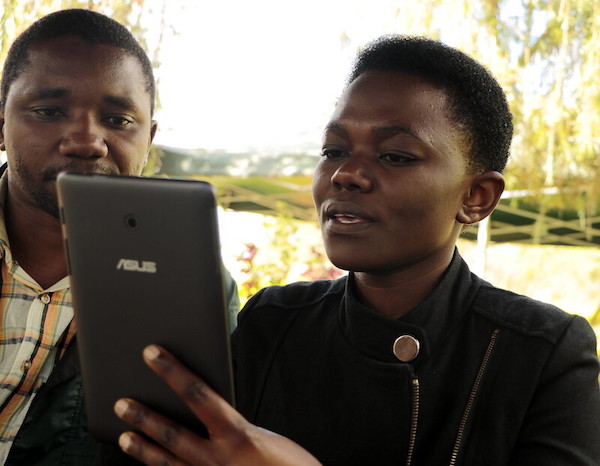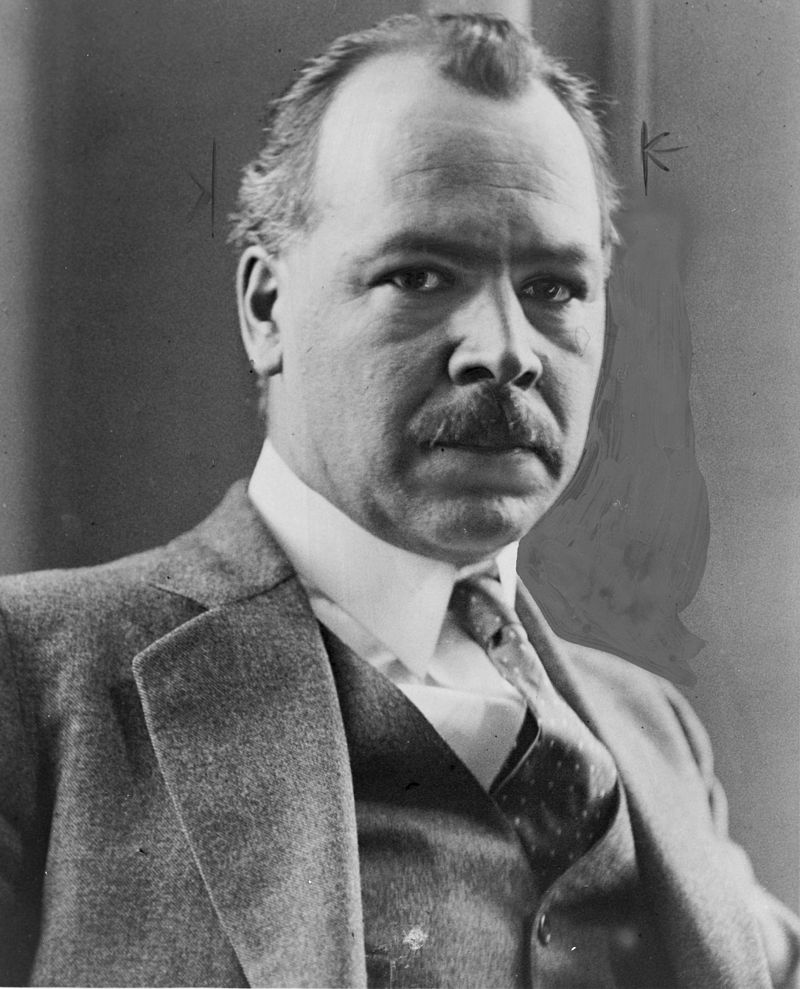


This week we spoke to Francisco Gomez and Ammani Kyanam, graduate students in the Soil and Crop Science Department at Texas A&M University, USA. They were part of the organizing committee for the recent Texas A&M Plant Breeding Symposium, a successful meeting run entirely by students at the University.

Francisco Gomez and Ammani Kyanam, part of the student organizing committee of the Plant Breeding Symposium
Could you begin with a brief introduction to the Plant Breeding Symposium held at Texas A&M in February?
Texas A&M University is one of the largest academic and public plant breeding institutions worldwide, which trains breeders in a variety of programs. Every year, students at the University organize the Texas A&M Plant Breeding Symposium, which is part of the DuPont Pioneer series of symposia. The symposium provides a platform for graduate students to bridge the interaction between the public and private sectors and engage in conversations about the grand challenges facing humanity that could be addressed by plant breeding. It’s also a great chance to network with faculty, students, and industry representatives.
Could you tell us more about this theme and how the different sessions were chosen?
We wanted the theme of the meeting to mirror the university’s goal of thinking big to pinpoint solutions to modern global challenges using plant science and breeding. Every member of the committee had the opportunity propose a theme, which were then put to a vote.

Nikolai Vavilov, a Russian botanist and geneticist, was the inspiration for this year’s symposium. Image credit: Public Domain.
This year’s theme, “The Vavilov Method: Utilizing Genetic Diversity”, celebrated the life and career of Russian botanist Nikolai Vavilov, who identified the centers of origin of cultivated plants. We invited plant scientists and breeders who are applying Vavilov’s ideas through the conservation, collection, and effective utilization of genetic diversity in modern crop breeding programs. This year we also developed a workshop entitled “Where does a breeder go to find genetic diversity?”, which allowed students and faculty to talk about the importance of utilizing genetic diversity in crop improvement and to learn new tools to help them incorporate genetic diversity in breeding programs.
Could you tell us more about how you developed the workshop?
Our aim for the workshop was to engage students and faculty on where we can find genetic diversity, how we can use it, and to include a panel discussion on the challenges and the future of genetic diversity in modern plant breeding programs. As a new value-added event, the workshop was challenging to set up because it required a different set of skills to the rest of the meeting. Once we had an idea of what we wanted, we set up an initial meeting with our speakers where we brainstormed ideas. After several online meetings and e-mails with Professor Paul Gepts (UC Davis), Dr. Colin Khoury (Agricultural Research Service, USDA; check out his recent GPC blog here!), and Professor Susan McCouch (Cornell University), we finalized the structure of the workshop, the layout of the sessions, and the objectives for the speakers. We also had a representative from DivSeek, Dr. Ruth Bastow, on the discussion panel, who contributed to our discussion on future tools for accessing diversity in the future.
How has the symposium grown since the inaugural meeting in 2015?
Every year we want to make the symposium a memorable event, and we want other students and faculty to really get something out of it. We are learning more and more about the students and faculty with these events, particularly in terms of which topics are the most exciting or interesting. The symposium has also grown into a two-day event, with this year’s inclusion of the workshop.
Did you have to overcome any challenges in the organization of the event?
One of our biggest challenges was to secure funding for the event, which is free to attend. To add further value to our event, we wanted to have additional components such as a student research competition and/or workshop, which meant we had to aggressively fundraise from multiple sources. This involved writing a lot of grant proposals both to plant sciences departments across Texas A&M University, as well as to other sources of external funding.
We are grateful to DuPont Pioneer for providing a large amount of the funding. In 2017, we also received sponsorship from the Texas Institute for Genomic Science and Society, Departments of Soil and Crop Sciences, Molecular and Environmental Plant Science, Horticulture, Plant Pathology, and Biology, Texas Grain Sorghum Association, Texas Peanut Producers Board, and Cotton Incorporated. Our beverage sponsor was Pepsi and Kind Snacks was our snack sponsor.
What advice would you give a graduate student trying to organize a similar event?
Plan early and set small goals! Communication is key for a large team to organize such an event. We encourage groups to use Slack or some sort of team work interface. It really helped us to be in constant communication with each other during the months leading up to the symposium.
Could you tell us a little about your own research?
My research (Francisco Gomez) is focused on identifying genomic regions (known as quantitative trait loci; QTLs) associated with mechanical traits that are known to be associated with stem lodging, a major agronomic problem that reduces yields worldwide. My colleague and co-chair, Ammani Kyanam, received her Masters in Plant Breeding in while working in the cotton cytogenetics program in our department. Her research focused on developing genomic tools to facilitate the development of Chromosome Segment Substitution Lines for upland cotton. She is currently mapping QTLs for aphid resistance in sorghum for her Ph.D. You can learn more about the research of our individual committee members at http://plantbreedingsymposium.com/committee/.
How can our readers connect with you?
We have a strong social media presence via Facebook, Instagram and YouTube, where we post event videos, photos and periodical updates. Check them out below!
Facebook: TAMUPBsymposium
Instagram: @pbsymposium
Twitter: @pbsymposium
YouTube: Texas A&M Plant Breeding Symposium
Website: plantbreedingsymposium.com
Email: mailto:pbsymposium@gmail.com
New Breeding Technologies in the Plant Sciences – Applications and Implications in Genome Editing
Gothenburg, Sweden, 7-8th July 2017
REGISTRATION FOR THIS MEETING IS NOW OPEN!
Organised by: Dr Ruth Bastow (Global Plant Council), Dr Geraint Parry (GARNet), Professor Stefan Jansson (Umeå University, Sweden) and Professor Barry Pogson (Australian National University, Australia).
Targeted genome engineering has been described as a “game-changing technology” for fields as diverse as human genetics and plant biotechnology. Novel techniques such as CRISPR-Cas9, Science’s 2015 Breakthrough of the Year, are revolutionizing scientific research, allowing the targeted and precise editing of genomes in ways that were not previously possible.
Used alongside other tools and strategies, gene-editing technologies have the potential to help combat food and nutritional insecurity and assist in the transition to more sustainable food production systems. The application and use of these technologies is therefore a hot topic for a wide range of stakeholders including scientists, funders, regulators, policy makers and the public. Despite its potential, there are a number of challenges in the adoption and uptake of genome editing, which we propose to highlight during this SEB satellite meeting.
One of the challenges that scientists face in applying technologies such as CRISPR-Cas9 to their research is the technique itself. Although the theoretical framework for using these techniques is easy to follow, the reality is often not so simple. This meeting will therefore explain the principles of applying CRISPR-Cas9 from experts who have successfully used this system in a variety of plant species. We will explore the challenges they encountered as well as some of the solutions and systems they adopted to achieve stably transformed gene-edited plants.
The second challenge for these transformative technologies is how regulatory bodies will treat and asses them. In many countries gene editing technologies do not fit within current policies and guidelines regarding the genetic modification and breeding of plants, as it possible to generate phenotypic variation that is indistinguishable from that generated by traditional breeding methods. Dealing with the ambiguities that techniques such as CRISPR-Cas9 have generated will be critical for the uptake and future use of new breeding technologies. This workshop will therefore outline the current regulatory environment in Europe surrounding gene editing, as well as the approaches being taken in other countries, and will discuss the potential implications and impacts of the use of genome engineering for crop improvement.
Overall this meeting will be of great interest to plant and crop scientists who are invested in the future of gene editing both on a practical and regulatory level. We will provide a forum for debate around the broader policy issues whilst include opportunities for in-depth discussion regarding the techniques required to make this technology work in your own research.
This meeting is being held as a satellite event to the Society for Experimental Biology’s Annual Main Meeting, which takes place in Gothenburg, Sweden, from the 3–6th July 2017.
The Generation Challenge Programme (GCP – not to be confused with GPC!) was enthused about repeatedly during the three day GPC/SEB Stress Resilience Forum held in Iguassu Falls, Brazil. This 10-year program was created by the Consultative Group on International Agricultural Research (CGIAR) in 2003 as a collaborative approach to developing food crops with improved stress resilience, and is widely hailed as a very successful example of the benefits of international collaboration and practical targeted research funding.
Dr Jean-Marcel Ribault, director of the GCP, spoke at the meeting about the success of the $170 M program, and the key things that other projects should consider when designing collaborative partnerships.
During its second phase (2009–2014), the GCP focused on seven key research initiatives: improving cassava, rice and sorghum for Africa’s drought-prone environments; improving drought tolerance in maize and wheat for Asia; tackling tropical legume productivity in marginal land in Africa and Asia; and the use of comparative genomics to improve cereal yields in high aluminum and low phosphorus soils.
The GCP acted as an international umbrella organization, distributing grants to fund research across different types of organizations (CG centers, universities and National Programs), either as commissioned projects or competitive funding calls. The aim was to bridge the gap between upstream research and applied crop science, enabling the development of markers and tools that could be of direct benefit to breeders and farmers in developing nations.
Ribault described one of the success stories of the GCP that highlighted the power of international collaborations working together on a problem to benefit people around the world. A team at Cornell University, working alongside Brazilian scientists, won a competitive grant to investigate aluminum (Al) tolerance in sorghum. They discovered a major gene responsible for Al tolerance by growing different accessions of sorghum in hydroponic systems, and began to breed tolerance into Brazilian sorghum cultivars through a commissioned project. The Brazilian team, with the support of scientists from Cornell, took on leadership to transfer these Al tolerant alleles to Africa, where they were also used to improve germplasm for Kenya and Niger.
The research funded by the GCP yielded many major research outputs, including a huge variety of genetic and genomic resources, improved germplasm and new bioinformatic tools to aid data management, diversity studies and breeding.
One of the most important parts of the GCP program was its support service component, a key part of which was the development of the Integrated Breeding Platform (IBP), an amazing resource for crop breeders. The IBP was designed as a way to disseminate knowledge and technology, giving breeders in developing countries access to the latest modern plant breeding tools and services in a practical manner.
The IBP’s core product, the Breeding Management System (BMS), allows breeders to manage their breeding program, including lists of crop genetic stocks as well as pedigree and germplasm information and field designs. It provides functionality for electronic phenotypic data capture and statistical analysis, access to molecular markers, breeding design and decision-support tools, and more. Through the Platform, users can also access climate data, geographic information system (GIS) information, genotyping services at concessionary prices, training opportunities and other relevant breeding support services.
A legacy of the GCP, the IBP lives on for further development and deployment, thanks to a grant from the Bill and Melinda Gates Foundation (phase II, 2014–2019). Ribault hinted that dissemination of the platform will be more difficult than its development; indeed it can be challenging to change a person’s behavior and work practices, even if breeders see the benefits of using the IBP!
Throughout his talk, Ribault described how the partnerships formed by and within the GCP were an important foundation to the success of the program. These dynamic networks were based on trust and on an evolution of responsibilities, and many of the partners have continued to work together after the GCP ended in 2014.
Working on projects around the world was not always easy, Ribault explained, but it meant that the results arising from the research were directly relevant to the agricultural practices in those countries, and therefore more likely to be used.
One of the most innovative approaches of the GCP was to dedicate around 15–20% of its budget each year to capacity development, which included holding workshops and training sessions, as well as funding studentships and fellowships to ensure future sustainability of the research projects. One novel practice was to run multi-year breeding courses, where participants were expected to bring along the outputs of their research each year. Anti-bottleneck funding was used to alleviate the problems that people were facing by providing much-needed resources or access to technology; Ribault highlighted this as one of the most important drivers of GCP’s success.
——
If you’d like to read more about the Generation Challenge Programme, please visit the GCP website.
If you’d like to read more about the Integrated Breeding Platform, please visit the IBP website.